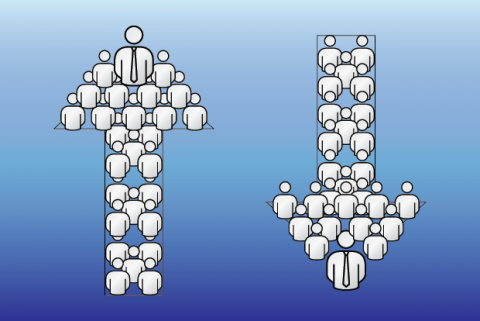An Interview with Cliff Tamplin, consultant and former vice president of technology support and risk management for Hyatt Hotels Corporation, about how CIOs, especially those who work globally, need to keep the end user in mind.

The Enterprisers Project (TEP): Cliff, is there a downside to everyone pursuing disruptive technologies to keep their companies relevant and competitive?
Cliff Tamplin: I believe there is. One of the things that I’m particularly concerned about right now is the digital divide. I think this is something that we have to be very wary of as we’re developing all these marvelous new tools and all this capability. There are an awful lot of people who won’t be able to take advantage of them either because they can’t get the Internet, the Internet they can get is very slow, or the political restrictions on technology in particular areas prevent it.
TEP: Would you consider this a new problem?
Tamplin: It’s not. It’s one of those perennial things. In the old days somebody would develop a multi-tier application on their local area network and then take half of that technology and shove it in a branch office, stuck on the end of a slow line, and assume that it would work.
That same thing from 20 years ago happens now, where a lot of the applications that are being developed for consumer use are developed by IT groups who have pristine networks, 4G LTE environments. Then you’ve got a user like my wife, coming into Lake Mills, Wisconsin, for the week, where she can barely get cellphone coverage, let alone 2G or whatever it has. Then all those applications just fall to pieces.
TEP: So you’re saying that it’s a new chapter in the haves versus have-nots, as well as both domestically in terms of net neutrality, and globally in terms of geopolitical pressures?
Tamplin: Correct. And that is something some CIOs may not need to worry about because their businesses will never go global or they may never have high-tech users. But most businesses are going to suffer from this phenomenon, and I think that that gap is only widening. You’ve probably seen all the stuff about Google, CenturyLink, and AT&T dropping 1-gigabit Ethernet to the home. Where I am in Florida today, my Internet comes from cable because CenturyLink can only deliver me DSL. Think about it. If you’ve got a user who’s got DSL, and you’re trying to develop something for them and for a user living in Austin who’s got one gig, the challenge of coming up with a consistent user experience across that range is quite incredible.
TEP: There was something in the New York Times recently about the fact that you can pay two or three hundred dollars a month in the United States to get super fast service that allows you to download a full HD movie in about a minute and a half. And that sounds awesome, until you look at South Korea and Japan, where for $30 a month you can get a service that allows you to do the same thing in about seven seconds. And the story led with the insight that this is not only about the consumer irritation factor, but it’s also is a business competitiveness issue.
Tamplin: To digress slightly, my sister living in a little medieval village in Italy gets the same Internet speed that I get for €2 a month. And in the UK, my mother gets 10 meg-DSL and she pays £12 a month, so $18 a month for that. Now here in the US, what do we have? The head of AT&T saying words to the effect of, "We’re going to stop deploying fiber because the government won’t guarantee us a monopoly. And if they’re going to make Internet a common carrier service, we’re not going to put any fiber in." We in the USA will lose our global competitive edge if we do not ensure that everyone has access to the best and fastest capabilities.
TEP: The article mentioned that monopoly mentality as well.
Tamplin: These are things that CIOs need to be aware of, because, again, if you’re working in a global company, you’ve got this massive range of environments in which to operate — Japan or Korea or The Philippines — where they’ve got blazing fast or just nominal capabilities. And you have to bring that home to your development and test environments, which is where IT departments have to contend with and accommodate all of these differences.
Cliff Tamplin has held a variety of roles with major global corporations including Barclays, M&M Mars, Diageo, Northwest Airlines and Hyatt Hotels & Resorts. These roles have spanned application design and development; infrastructure architecture and operations; and information security.




